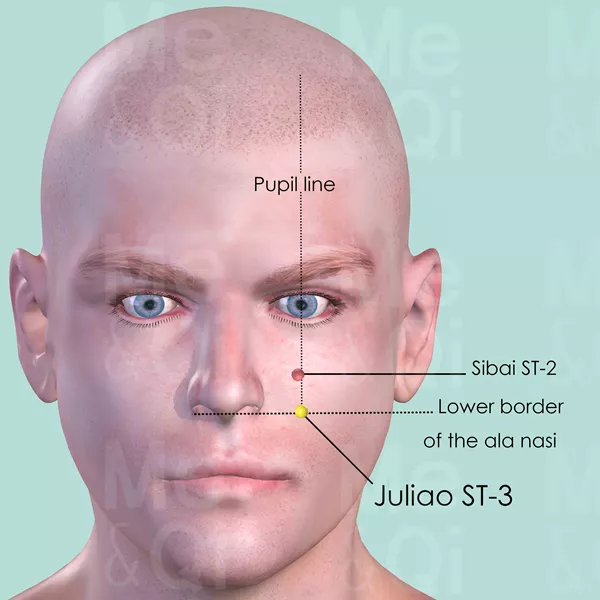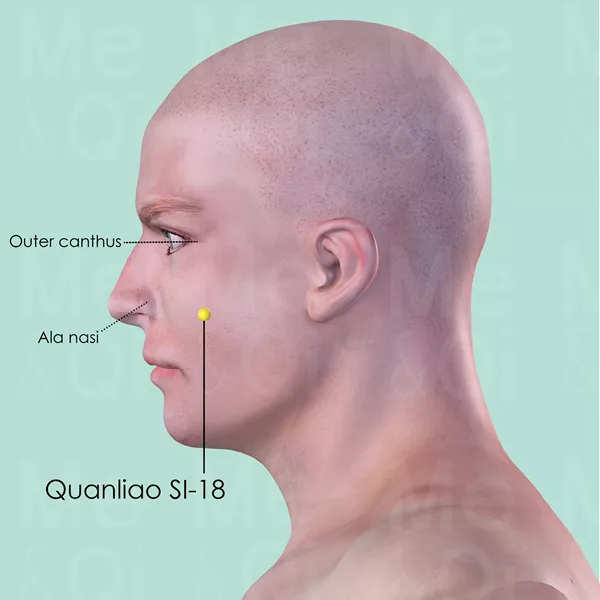Cheek Swellingaccording to TCM
Symptom family: Face Conditions and Symptoms
Parent symptom: Facial Swelling
What is Cheek Swelling?
Cheek swelling, also known as edema of the cheek or swollen cheek, refers to the abnormal enlargement or puffiness in the cheek area. This condition can be caused by various factors, including infections, allergies, dental issues, trauma, or underlying health conditions. Symptoms of cheek swelling may include redness, tenderness, and pain, and the swelling can range from mild to severe. It is a particular form of facial swelling and can significantly impact a person's appearance and comfort, often requiring medical evaluation to determine the underlying cause and appropriate treatment.
How Does TCM View Cheek Swelling?
In Traditional Chinese Medicine (TCM), cheek swelling is viewed through the lens of patterns of disharmony. Unlike Western medicine, which focuses on specific physical causes, TCM considers the underlying imbalances in the body's Qi, Blood, and other vital substances. Various patterns of disharmony can cause symptoms like cheek swelling, making it crucial to identify the correct pattern before initiating treatment. This holistic approach aims to address the root causes of swelling and restore balance within the body, providing comprehensive relief and promoting overall health.
For example, cheek swelling may result from Wind-Heat invasion, where external pathogens cause inflammation and swelling. Another common pattern is Dampness accumulation, where excess moisture disrupts the normal flow of Qi and Blood, leading to localized swelling. Identifying these patterns helps TCM practitioners tailor treatments to address both the symptoms and their underlying causes.
Acupoints for Cheek Swelling
In TCM, specific acupoints are used to treat cheek swelling by addressing the underlying patterns of disharmony. In the Stomach Channel, acupoints such as Xiaguan ST-7, Daying ST-5, Jiache ST-6, and Juliao ST-3 are commonly recommended. Xiaguan ST-7, located in the depression at the lower border of the zygomatic arch, benefits the ears, jaw, and teeth, and removes obstructions from the channel, making it effective for swelling caused by Wind invasion. Daying ST-5, on the lateral mandible, expels Wind and reduces swelling. Jiache ST-6 and Juliao ST-3 also help to expel Wind and alleviate swelling, particularly in the cheek area.
In the Small Intestine Channel, Quanliao SI-18, located directly below the outer canthus, is used to expel Wind and clear Heat, resolving swelling and inflammation. In the Gall Bladder Channel, Qubin GB-7, situated within the hairline anterior and superior to the auricle, expels Wind and benefits the mouth and jaw, addressing swelling and associated symptoms. By targeting these specific acupoints, TCM practitioners aim to reduce cheek swelling, restore the smooth flow of Qi and Blood, and promote overall well-being.
Explore below some acupoints used to address cheek swelling, organized by meridian.
- By Meridian
- Stomach Channel
- Small Intestine Channel
- Gall Bladder Channel
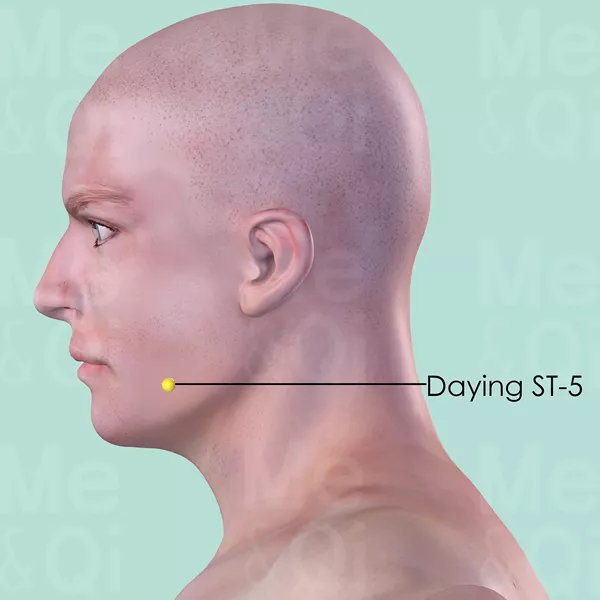
Daying ST-5
On the lateral mandible, on the anterior border of masseter muscle, in the groove-like depression appearing when the cheek is bulged.
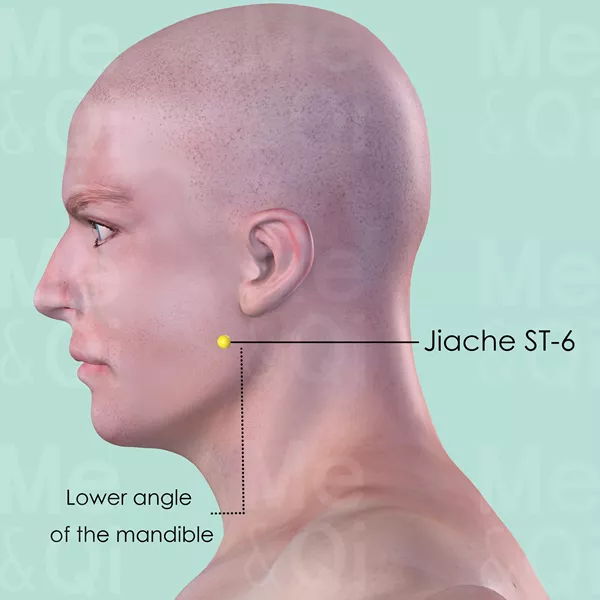
Jiache ST-6
One finger-breadth anterior and superior to the lower angle of the mandible where masseter muscle attaches at the prominence of the muscle when the teeth are clenched.
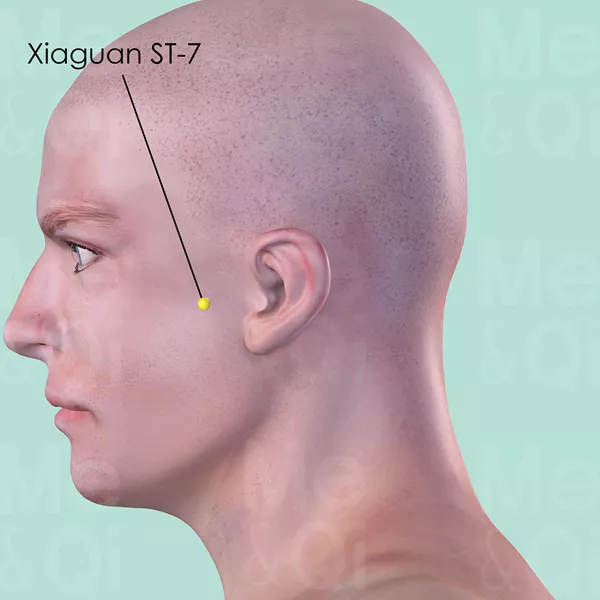
Xiaguan ST-7
In the depression at the lower border of the zygomatic arch, anterior to the condyloid process of the mandible. Xiaguan ST-7 is located when the mouth is closed.
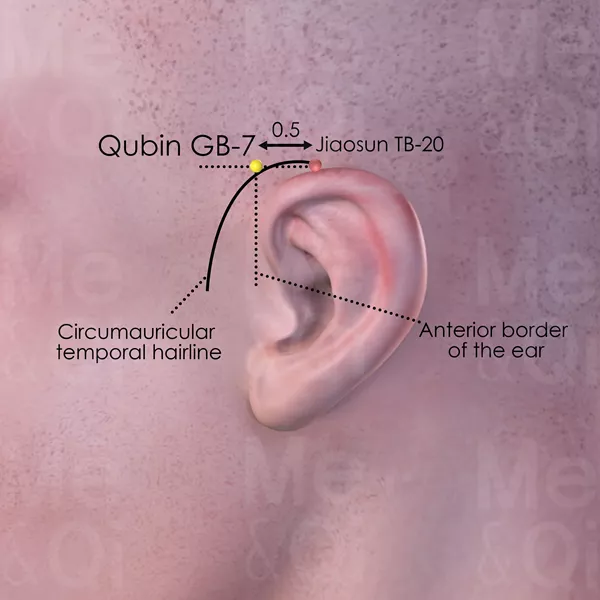
Qubin GB-7
Within the hairline anterior and superior to the auricle, about 1 finger-breadth (0.5 cun) anterior to Jiaosun TB-20 which is on the apex of the ear.

